Scientific name Cynocephalidae | Higher classification Dermoptera | |
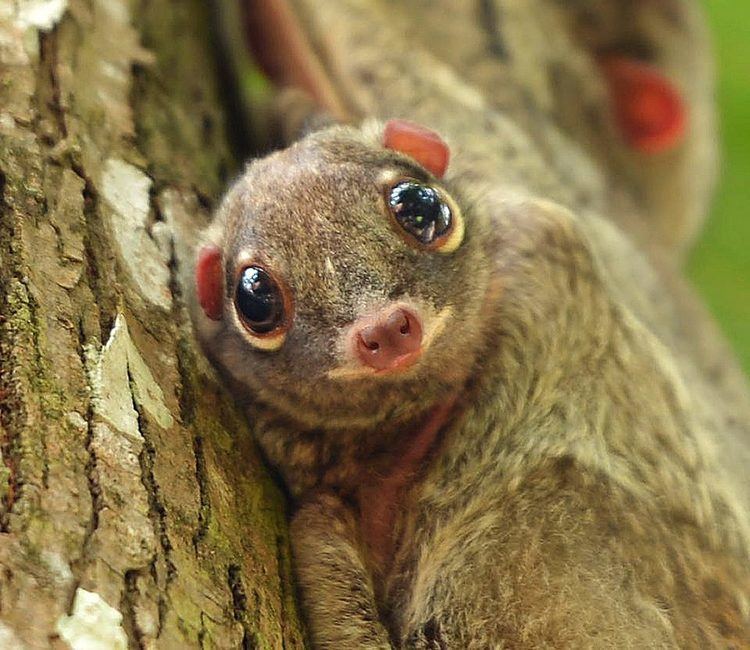 | ||
Order DermopteraIlliger, 1811 Similar | ||
The colugo
Colugos (/KəˈluːɡOʊz/) are arboreal gliding mammals found in Southeast Asia. Just two extant species make up the entire family Cynocephalidae (/ˌSaɪNoʊˌsɛfəˈlaɪDiː, -ˌkɛ-/) and order Dermoptera. They are the most capable gliders of all gliding mammals, using flaps of extra skin between their legs to glide from higher to lower locations. They are also known as cobegos or flying lemurs, although they are not true lemurs.
Contents
- The colugo
- It s a bird it s a plane it s a colugo nat geo live
- Characteristics
- Status
- Classification and evolution
- Synonyms
- References
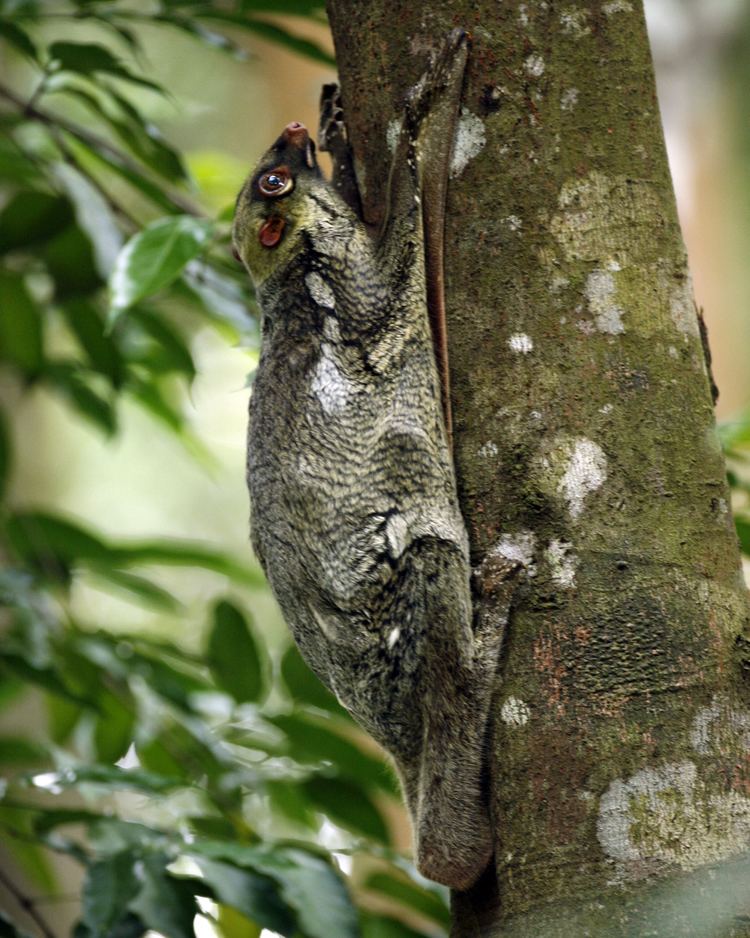
It s a bird it s a plane it s a colugo nat geo live
Characteristics
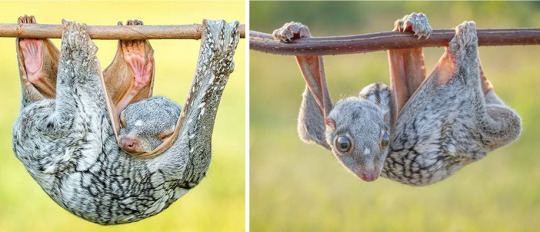
Colugos are tree-dwelling mammals. They reach lengths of 35 to 40 cm (14 to 16 in) and weigh 1 to 2 kg (2.2 to 4.4 lb). They have long slender front and rear limbs, a medium-length tail, and a relatively light build. The head is small, with large front-focused eyes for excellent binocular vision, and small rounded ears.
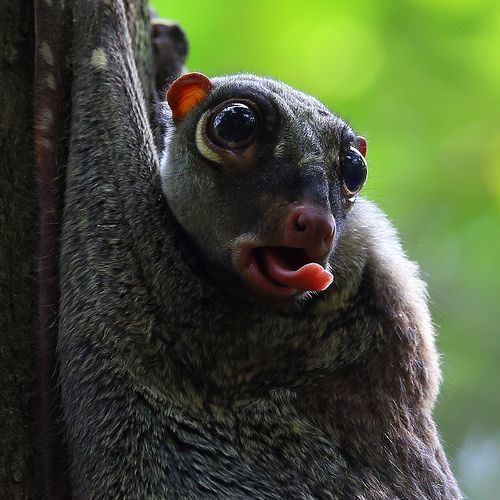
Colugos are proficient gliders, and they can travel as far as 70 m (230 ft) from one tree to another without losing much altitude. Of all the gliding mammals, the colugo has the most extensive adaptation for flight. They have a large membrane of skin which extends between their paired limbs and gives them the ability to glide far distances between trees. This gliding membrane, or patagium, runs from the shoulder blades to the fore paw, from the tip of the rear-most finger to the tip of the toes, and from the hind legs to the tip of the tail. The spaces between the colugo's fingers and toes are webbed. As a result, colugos were once considered to be close relatives of bats. Today, they are now considered to be the closest living relatives of primates.
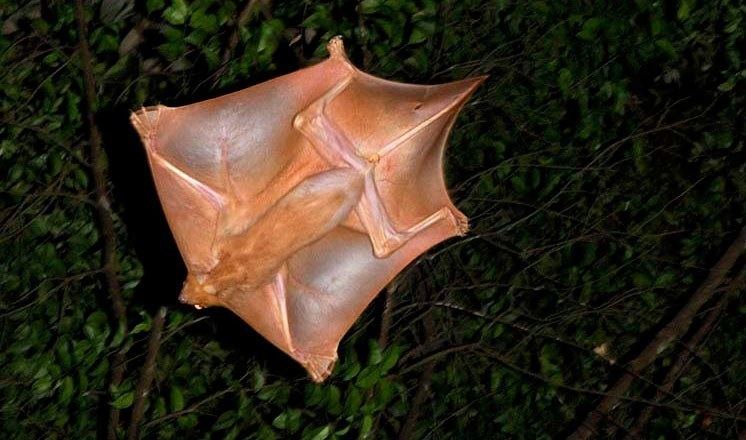
Colugos are unskilled climbers; they lack opposable thumbs and are not especially strong. They progress up trees in a series of slow hops, gripping onto the bark with their small sharp claws. Colugos spend most of the day curled up in tree hollows or hanging inconspicuously under branches.
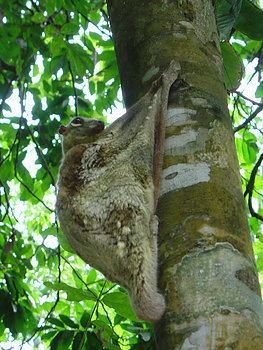
Colugos are shy, nocturnal, solitary organisms found in the tropical rainforests of Southeast Asia. As a result, very little is known about their behavior. They are herbivorous and eat leaves, shoots, flowers, sap, and fruit. They have well-developed stomachs and long intestines capable of extracting nutrients from leaves and other fibrous material.
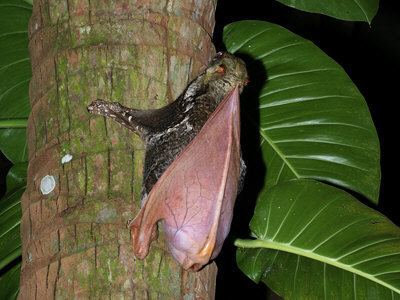
The incisor teeth of colugos are highly distinctive; they are comb-like in shape with up to 20 tines on each tooth. The incisors are analogous in appearance and function to the incisor suite in strepsirrhines, which is used for grooming. The second upper incisors have two roots, another unique feature among mammals. The dental formula of colugos is: 2.1.2.33.1.2.3
Although they are placental mammals, colugos raise their young in a similar fashion to marsupials. Newborn colugos are underdeveloped and weigh only 35 g (1.2 oz). They spend the first six months of life clinging to their mother's belly. The mother colugo curls her tail and folds her patagium into a warm, secure, quasi-pouch in order to protect and transport her young. The young do not reach maturity until they are two or three years old.
Status
Both species are threatened by habitat destruction, and the Philippine flying lemur was once classified by the IUCN as vulnerable. In 1996 The IUCN declared the species vulnerable owing to destruction of lowland forests and hunting. It was downlisted to Least Concern status in 2008, but still faces the same threats. In addition to the ongoing clearing of its rainforest habitat, it is hunted for its meat and fur. It is also a favorite prey item for the gravely endangered Philippine eagle: some studies suggest colugos account for 90% of the eagle's diet.
Classification and evolution
The Mixodectidae and Plagiomenidae appear to be fossil Dermoptera. Although other Paleogene mammals have been interpreted as related to dermopterans, the evidence for this association is uncertain and many of the fossils are no longer interpreted as being gliding mammals. At present, the fossil record of definitive dermopterans is limited to two species of the Eocene and Oligocene cynocephalid genus Dermotherium.
Recent molecular phylogenetic studies have demonstrated that colugos emerged as a basal Primatomorpha clade which is a basal Euarchontoglires clade. Treeshrews (order Scandentia) emerged as sister of Glires (lagomorphs and rodents), in an unnamed sister clade of the Primatomorpha.
Synonyms
The names Colugidae, Galeopithecidae, and Galeopteridae are synonyms for Cynocephalidae. Colugo, Dermopterus, Galeolemur, Galeopithecus, Galeopus, and Pleuropterus are synonyms for Cynocephalus.
